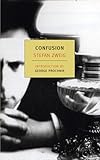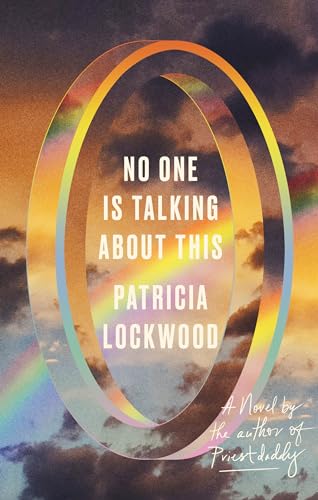Last fall, I ordered a large, overstuffed “chair-in-a-half.” It was to be my reading chair, a place where I could go and no one in the family would bother me. True to its name, this chair cost about 50 percent more than I thought it should, and I felt a rush of adrenaline when I hit the buy button. A few minutes later, an email informed me that the chair would arrive six months later, in early February. I complained about this to everyone in my household. “The winter will be half over by then!” Little did I know, we’d be getting a winter-and-a-half, overstuffed with snow and ice. I also didn’t realize that when cold weather hit, the last thing I’d want to do on the weekends was sit in chair within earshot of my children. Instead, I went out for long, freezing walks so I could listen to albums and podcasts uninterrupted.
When my chair finally arrived, it was as cozy as I hoped but unfortunately, it did not make me invisible. I had to wait until after my kids went to bed to really make use of it. There were many nights when I dozed off after a few pages of reading. This was a year when I didn’t finish a lot of the books I started. But there were some wonderfully extended reading sessions when I stayed awake for hours. Here are some of the books that I remember from those evenings.
My first chair read was Patricia Lockwood’s novel No One Is Talking About This, which I checked out from the library. I read this in two sessions and wasn’t tempted to look at my phone the whole time because reading it, especially the first half, was like being on the Internet—but a highly refined, dreamy version.
 I downloaded Uncanny Valley by Anna Weiner, which seemed like the right format for a memoir about working in Silicon Valley. I loved the ambivalence at the core of this memoir and the slight passivity of the narrator, the way she just sort of went with the cultural tides and lived to tell the tale.
I downloaded Uncanny Valley by Anna Weiner, which seemed like the right format for a memoir about working in Silicon Valley. I loved the ambivalence at the core of this memoir and the slight passivity of the narrator, the way she just sort of went with the cultural tides and lived to tell the tale.
 My Salinger Year by Joanna Rakoff was another memoir about work, a coming-of-age story about turning away from a profession in order to follow a calling. It made me deeply nostalgic for the New York City of the late 1990s, when email was still new.
My Salinger Year by Joanna Rakoff was another memoir about work, a coming-of-age story about turning away from a profession in order to follow a calling. It made me deeply nostalgic for the New York City of the late 1990s, when email was still new.
 Jamaica Kincaid’s My Garden (Book) made me want to plant a garden and to follow my obsessions to the ends of the earth. It was a balm to read at the tail end of winter.
Jamaica Kincaid’s My Garden (Book) made me want to plant a garden and to follow my obsessions to the ends of the earth. It was a balm to read at the tail end of winter.

 I read two Stefan Zweig novels in a row: Confusion and Journey Into the Past. I can barely remember what either is about now, but I loved the feeling of reading them, the dense emotional mood of a late-night confession.
I read two Stefan Zweig novels in a row: Confusion and Journey Into the Past. I can barely remember what either is about now, but I loved the feeling of reading them, the dense emotional mood of a late-night confession.
 Over the course of a week, I read Keith Gessen’s A Terrible Country. The pacing of this novel about a year in Moscow gives the feeling of what it’s like to move to a new place—the slowness of time at the beginning and then the way everything speeds up as life becomes busier and more complex.
Over the course of a week, I read Keith Gessen’s A Terrible Country. The pacing of this novel about a year in Moscow gives the feeling of what it’s like to move to a new place—the slowness of time at the beginning and then the way everything speeds up as life becomes busier and more complex.
Speaking of excellent pacing, I know I’m the last person to read Min Jin Lee’s Pachinko but I finally got to it and was totally swept up, as everyone promised I would be. It’s an epic but it’s also warm and intimate. I loved reading it.
 After Pachinko, I had trouble settling into a new book so I reread a novel I remembered loving when I first read it, 15 years ago: Stoner by John Williams. It was as just as good the second time, although I was somewhat troubled by the portrait of the wife. She was more of a villain than I remembered, evil in a way I hadn’t reckoned with on the first reading. What I admire about the book is the way it seems to capture one man’s entire life and the forces of history acting upon him. There’s a weight and depth to it, though it’s actually a pretty short novel.
After Pachinko, I had trouble settling into a new book so I reread a novel I remembered loving when I first read it, 15 years ago: Stoner by John Williams. It was as just as good the second time, although I was somewhat troubled by the portrait of the wife. She was more of a villain than I remembered, evil in a way I hadn’t reckoned with on the first reading. What I admire about the book is the way it seems to capture one man’s entire life and the forces of history acting upon him. There’s a weight and depth to it, though it’s actually a pretty short novel.
 Another book I reread was Slaughterhouse-Five by Kurt Vonnegut, Jr. I recently wrote about it for this site, but long story short, I was stunned by what a total masterpiece it was. I’d loved it as a teenager but hadn’t come close to understanding what it was really about back then.
Another book I reread was Slaughterhouse-Five by Kurt Vonnegut, Jr. I recently wrote about it for this site, but long story short, I was stunned by what a total masterpiece it was. I’d loved it as a teenager but hadn’t come close to understanding what it was really about back then.
 I read Amitov Ghosh’s The Great Derangement and it changed the way I thought about the climate crisis and about fiction about the subject. (Incidentally, he mentions Vonnegut as one of the first contemporary writers to reckon with the subject.)
I read Amitov Ghosh’s The Great Derangement and it changed the way I thought about the climate crisis and about fiction about the subject. (Incidentally, he mentions Vonnegut as one of the first contemporary writers to reckon with the subject.)
Finally, I read How to Write and Autobiographical Novel by Alexander Chee. It’s a series of essays about writing, money, publishing, and just plain life that has the flavor of a coming-of-age novel. This book is a gift to writers.
More from A Year in Reading 2021 (opens in a new tab)
Don’t miss: A Year in Reading 2020, 2019, 2018, 2017, 2016, 2015, 2014, 2013, 2012, 2011, 2010, 2009, 2008, 2007, 2006, 2005









